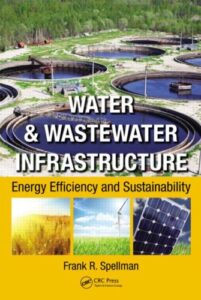Water and wastewater infrastructure: Energy efficiency and sustainability
Water and wastewater infrastructure: Energy efficiency and sustainability
Water and wastewater infrastructure: Energy efficiency and sustainability is about energy use today and future energy availability for the treatment of the water we drink and the water we foul through our use or abuse (or both). The pressing reality? Have you noticed the current prices of gasoline, heating oil, and diesel fuel in the United States? The pressing reality of the high cost of hydrocarbon fuels is just one facet of the growing problem. How about our growing population and the corresponding need to increase our use of energy to support, maintain, and sustain the growing population? Moreover, we also need to consider worldwide growth in energy needs, now and in the future. China and India, for example, are expanding their populations, their economies, and thus their need for energy.
Download Pneumatic Conveying Design Guide Second Edition
With regard to the focus of Water & Wastewater Infrastructure: Energy Efficiency and Sustainability, keep in mind that water and wastewater treatment facilities across the country are facing many common challenges, including rising costs, aging infrastructure, increasingly stringent regulatory requirements, population changes, and a rapidly changing workforce.
Water and wastewater infrastructure: Energy efficiency and sustainability Content
- Contents
![Water and wastewater infrastructure]()
- Preface
- Author
- Acronyms and Abbreviations
- Introduction
- Characteristics of the Wastewater and Drinking Water Industries
- Water, Wastewater, and Energy
- Planning for a Sustainable Energy Future
- Energy-Efficient Equipment
- Energy-Efficient Operating Strategies
- Combined Heat and Power (CHP)
- Gas Turbines
- Micro-turbines
- Reciprocating Engines
- Steam Turbines
- Fuel Cells.
- Macro- and Microhydro-power
- Solar Power
- Wind Power
- Energy Conservation Measures for Wastewater Treatment
Water and wastewater infrastructure: Energy efficiency and sustainability Appendixes
- A. Magnetic Bearing Turbo Blowers at the Green Bay Metropolitan Sewerage District De Pere Wastewater Treatment Facility.
- B. Turblex® Blowers and Air Flow Control Valves on the Sheboygan Regional Wastewater Treatment Plant
- C. Upgrade from Mechanical Aeration to Air-Bearing Turbo Blowers and Fine-Bubble Diffusers at the Big Gulch Wastewater Treatment Plant
- D. Optical DO Sensor Technology and Aerator Rotor VFD Control at the City of Bartlett, Tennessee, Wastewater Treatment Plant
- E. Advanced Aeration Control for the Oxnard, California, Wastewater Treatment Plant
- F. DO Optimization Using Floating Pressure Blower Control in a Most Open Valve Strategy at the Narragansett Bay Commission Bucklin Point WTTP, Rhode Island
- G. Capacity and Fuel Efficiency Improvements at Washington Suburban Sanitary Commission Western Branch WWTP, Prince Georges County, Maryland
- H. Permit-Safe and Energy-Smart Greening of Wastewater Treatment Plant Operations at the San Jose/Santa Clara, California, Water Pollution Control Plant.
- I. Diffuser Upgrades and DO Controlled Blowers at the Waco, Texas, Metropolitan Area Regional Sewer System Wastewater Treatment Facility


Comments are closed.